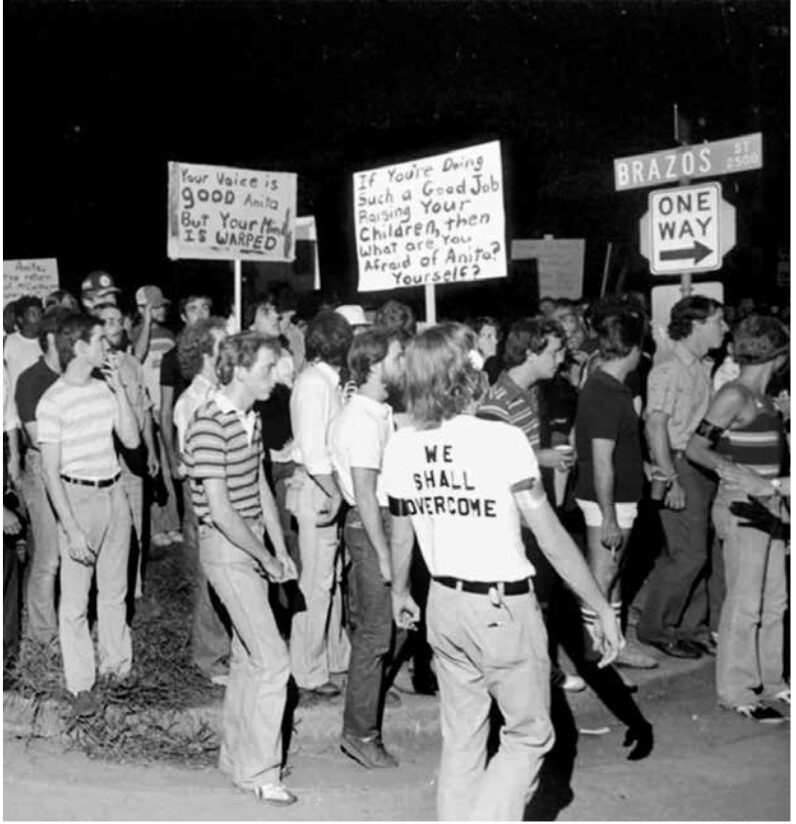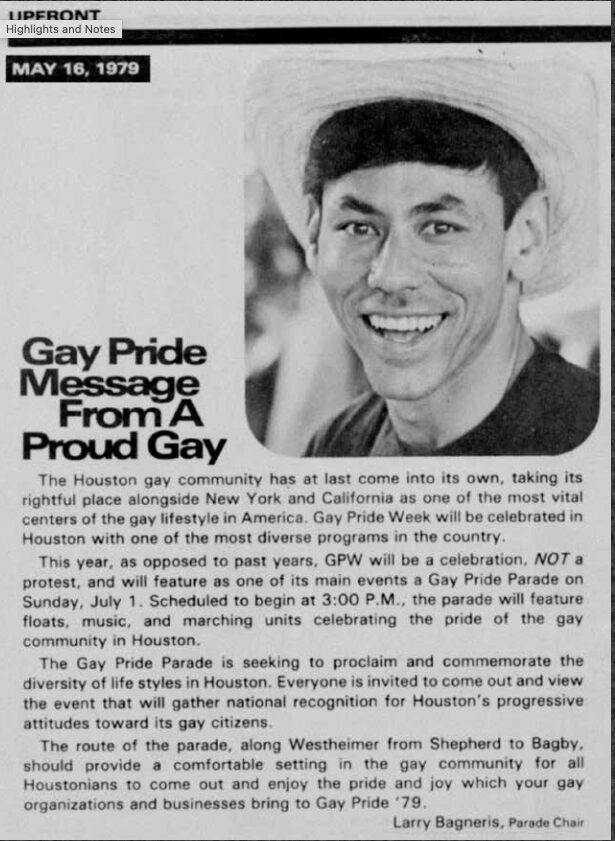Armstrong Chavers [1986] file courtesy of houstonlgbthistory.org
Larry Bagneris is a mainstay in New Orleans’ homosexual neighborhood—however his activism began in Houston, the place he helped launch the metropolis’s first Pleasure parade in 1979 and have become the primary Black president of the LGBTQ+ Political Caucus. Bagneris simply launched a brand new memoir, Name Me Larry: A Creole Man’s Overcome Racism and Homophobia.
Bagneris was a key determine within the struggle for civil rights — advocating for each Black and LGBTQ+ communities. He grew up the son of a Creole household – a, folks of blended French, African, Spanish, and Native American ancestry. However Bagneris was all the time keenly conscious of the racism embedded in New Orleans society and has early reminiscences of youngsters calling him the n-word.
Rising up Catholic, Bagneris grappled early on along with his sexual orientation. He knew he preferred boys from a younger age. Whereas his household was accepting, the broader world round him was not. As a younger man, Bagneris prayed relentlessly to alter how he felt—and even sought out a psychiatrist in a determined try to change his sexuality. However when the physician recommended shock remedy, he stormed out. By probability, he walked straight right into a protest towards segregation—marking the start of his journey into civil rights activism.
Bagneris graduated highschool in 1964, because the nation was going via dramatic social modifications – and enrolled in Xavier College, the one traditionally Black, Catholic college in the USA. As a scholar, he additionally frequented the French Quarter, the place queer tradition was flourishing, however he nonetheless struggled with popping out and absolutely embracing his id. A professor who noticed his inside battle invited Bagneris to make a journey to New York after commencement to get a broader view of the world. He ended up on the Stonewall Inn, the place the well-known Stonewall Riots of 1969 occurred that primarily launched a brand new motion for homosexual rights. His go to was simply earlier than that well-known second – however simply the identical, skilled a police raid of the bar. He escaped, however the second confirmed him what it felt prefer to be a part of an actual neighborhood.

After faculty, Bagneris obtained a job in Houston as an govt within the stationery division of Foley’s. He felt that snug in Houston because it was queer-friendly, laid-back, and multiracial. Beginning in 1970 and within the years that adopted, queer media and organizations started to spring up along with the numerous bars that may come to populate Montrose. There was programming on the radio station KPFT and publications just like the Nuntius.
It was nonetheless conservative Texas although and as a homosexual Black man within the early 70s in Houston, he needed to confront racism and homophobia. The Texas State Bar Affiliation invited Anita Bryant to seem at their Houston conference in June of 1977. Bryant was a really outstanding singer anti-gay activist. Her arrival in Houston galvanized the homosexual neighborhood and was a “popping out” for Bagneris as a outstanding activist and chief. In 1979, Bagneris based the Houston Pleasure Parade that continues to at the present time. Whereas we see it at present as a longtime establishment with a number of help from native authorities officers and native police, within the late Seventies, it was a herculean effort to get the town onboard with such a high-profile occasion.

You’ll be able to take heed to the dialog with Larry Bagneris on Houston Issues. His memoir, Name Me Larry: A Creole Man’s Overcome Racism and Homophobia, is out there from the Historic New Orleans Assortment.

